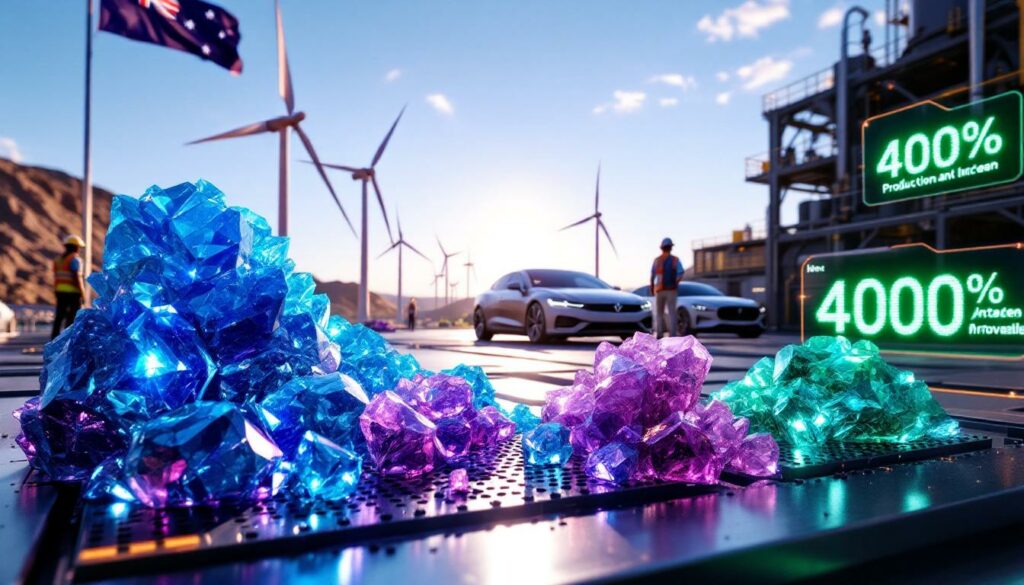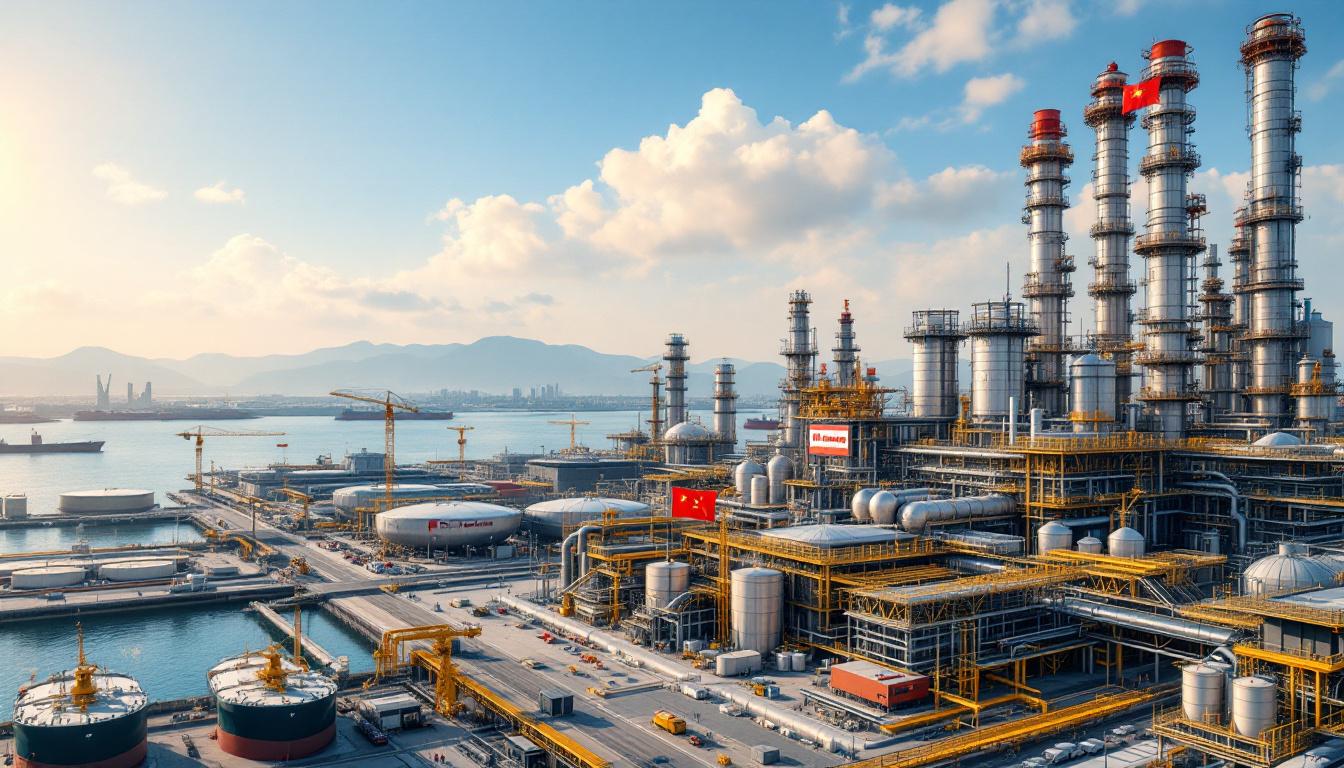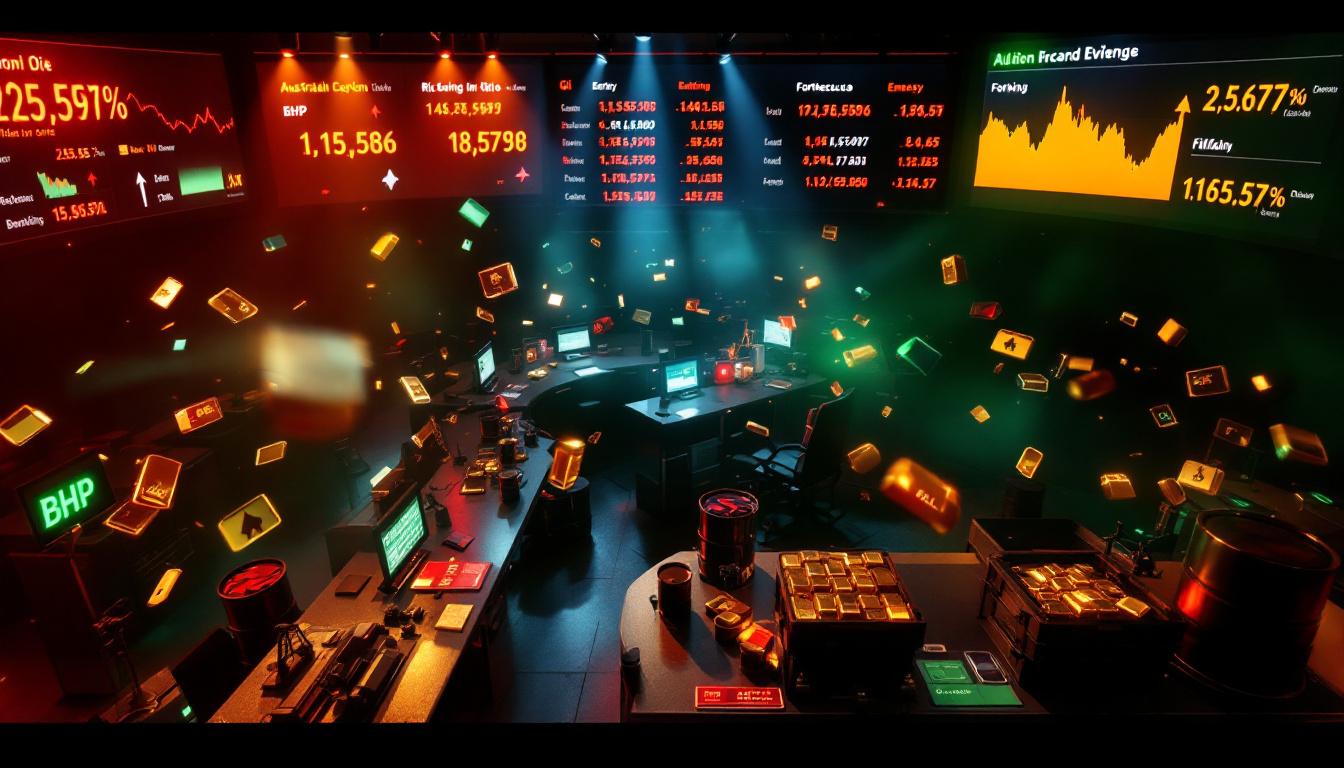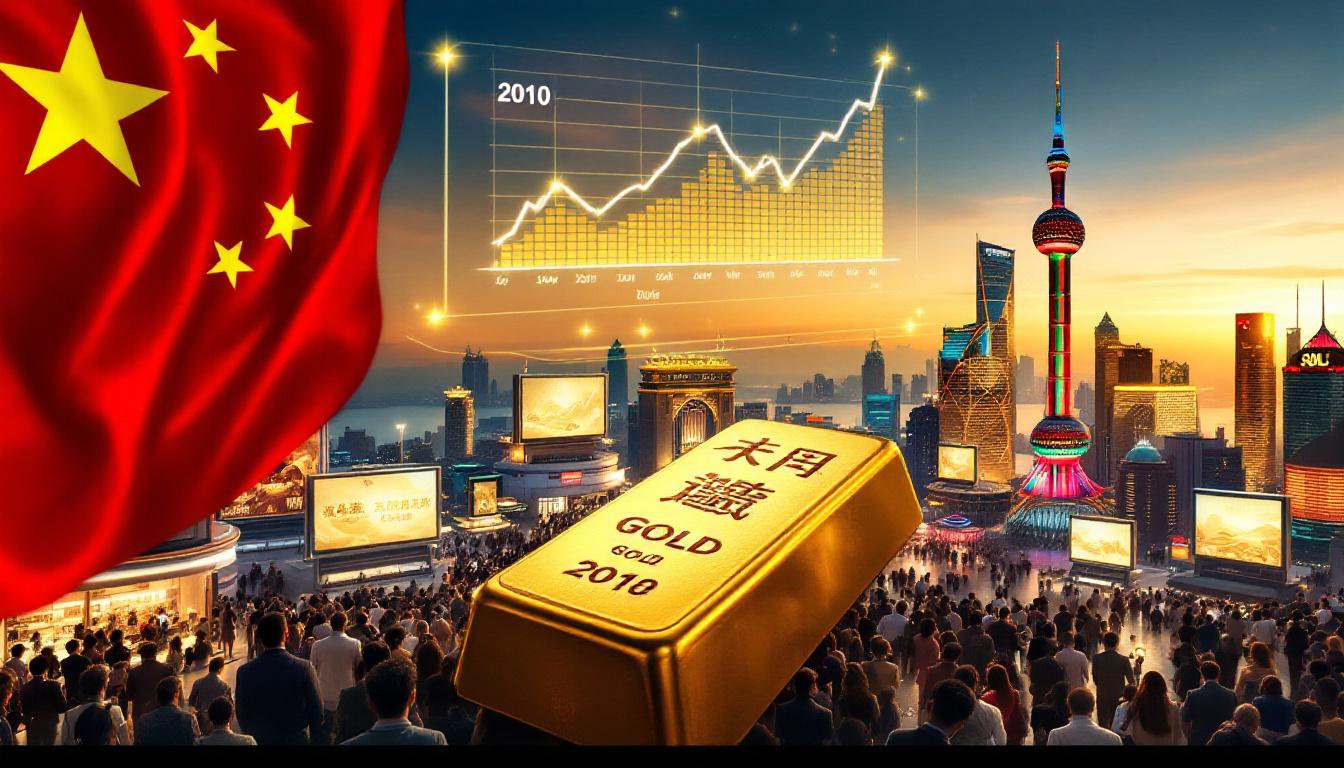What is Lynas Rare Earths and Why is it Significant?
Lynas Rare Earths Ltd (ASX: LYC) stands as a critical player in the global rare earths industry, distinguished by its position as the only major producer of separated rare earth materials outside of China. This strategic advantage has contributed significantly to the company's impressive 60% share price growth in 2025 and remarkable 400% increase over the past five years.
Amanda Lacaze, Lynas CEO, emphasizes the company's strategic importance: "Our Mt Weld resource is a strategic asset ensuring Western supply chain resilience." This perspective is reinforced by the U.S. Department of Energy, which identified Lynas as "critical for diversifying rare earth supply away from China" in its 2023 Critical Materials Assessment.
A Unique Position in the Global Rare Earths Market
While China controls approximately 85% of global rare earth refining capacity according to Adamas Intelligence's 2024 Report, Lynas has established itself as the primary non-Chinese alternative. This positioning has become increasingly valuable as nations worldwide seek to reduce dependence on Chinese supply chains for these critical minerals for energy transition.
The company's geopolitical significance is highlighted in the U.S.-Australia Joint Critical Minerals Supply Chain Action Plan (2022), which cites Lynas as a "priority partner" in securing stable rare earth supplies for Western economies.
World-Class Mining and Processing Operations
The company's operations center around two key assets:
- The Mt Weld mine in Western Australia, with proven reserves of 24.1 million tonnes grading 8.4% Total Rare Earth Oxides (TREO)
- The largest rare earths processing facility outside China, located in Malaysia, with an annual capacity of 25,000 tonnes of rare earth materials
This vertical integration gives Lynas unparalleled control over its supply chain outside of China. In 2024, the company demonstrated its strategic value by securing a $120 million contract with the U.S. Department of Defense for NdPr supply, underscoring its importance to Western supply chain security.
What Production Records Did Lynas Break in Q4 FY25?
Unprecedented NdPr Production Milestone
In its fourth quarter FY25 results, Lynas achieved a significant breakthrough by producing 2,080 tonnes of neodymium-praseodymium (NdPr) for the first time in company history. This represents a substantial 38% increase compared to the previous quarter's output of 1,507 tonnes.
The company's Chief Technology Officer attributed this achievement to "optimized cracking and leaching processes" that drove the NdPr output surge, as stated during the Lynas Investor Webinar on July 24, 2025.
Overall Rare Earth Oxide Production Surge
Beyond NdPr, Lynas reported impressive growth across its entire production portfolio:
- Total rare earth oxide (REO) production reached 3,212 tonnes
- This marks a 68% increase from the previous quarter
- The average selling price rose to $60.20 per kilogram, the highest level since July 2022
- Sales revenue grew to $170.2 million, up 38% quarter-on-quarter
The production breakthrough is particularly noteworthy as it demonstrates Lynas achieving NdPr separation efficiency with 92% purity through its solvent extraction refinement process, according to the company's 2024 Sustainability Report.
Why Are Rare Earths Important for Modern Technology?
Critical Components in Clean Energy and Technology Applications
Rare earth elements comprise 17 specialized metals that serve as essential ingredients in numerous modern technologies. According to the U.S. Geological Survey's Mineral Commodity Summaries 2025, approximately 90% of global NdPr demand comes from permanent magnets used in a wide range of applications:
- Electric vehicles (EVs) rely on rare earth permanent magnets, with each vehicle requiring 4-6 kg of NdPr per motor
- Wind turbines require these elements for efficient power generation, with Vestas turbines consuming 600-700 kg of NdPr per 1 MW generator
- Consumer electronics including smartphones and computers depend on rare earths
- Robotics and automation systems utilize these materials for precision components
Dr. Nedal Nassar of the USGS notes that "NdPr magnets reduce motor weight by 40% while boosting efficiency," highlighting their irreplaceable role in modern technology.
The Strategic Importance of NdPr
Among the 17 rare earth elements, neodymium (Nd) and praseodymium (Pr) hold particular significance:
- These elements are crucial components in manufacturing NdFeB (neodymium-iron-boron) permanent magnets
- NdPr magnets power electric motors in EVs and e-bikes, with Tesla's Model Y using approximately 1.8 kg of NdPr per motor
- They enable the functionality of wind turbines and various consumer electronics
- The growing demand for clean energy technologies is driving increased need for these materials
"The challenge with rare earths isn't their rarity—it's the complexity of separating them economically while meeting environmental standards. This is where Lynas has a significant advantage outside of China." — Mining industry analyst, Critical Minerals Conference 2025
What's particularly concerning is that despite their importance, less than 1% of rare earths are recycled globally according to the UNEP 2023 Report, highlighting the continued dependence on mining new materials. Additionally, there are no scalable alternatives to NdPr in high-temperature applications such as EV motors, further underlining their strategic importance.
What Other Milestones Did Lynas Achieve in Q4 FY25?
First Commercial Heavy Rare Earths Production Outside China
Beyond breaking production records, Lynas marked another industry milestone:
- Successfully completed first commercial production of separated Heavy Rare Earths (HRE)
- Utilized its new processing line in Malaysia
- Represents the first commercial HRE production outside China in decades
- Enhances the company's product portfolio and market positioning
The significance of this achievement was highlighted by Lynas CEO Amanda Lacaze, who stated that "HRE production at Malaysia marks a supply chain breakthrough for Western industries" in the company's ASX Announcement on July 24, 2025.
The HRE elements produced—dysprosium (Dy) and terbium (Tb)—are particularly valuable for high-tech applications. Dysprosium extends magnet heat resistance in EVs, while terbium enables miniaturization in medical devices and other precision equipment.
According to Roskill's 2024 Report, global dysprosium demand is projected to grow at a 15% CAGR through 2030, making Lynas's entry into this market segment particularly timely.
Progress on Capital Growth Initiatives
The company also reported significant advancement in its strategic expansion plans:
- Major construction works for the 'Lynas 2025' capital growth project largely completed
- Focus shifting to stabilizing production at higher volumes
- Strategic alignment of output with market demand
- Positioning for sustained growth as rare earths demand continues to increase
The completion of this project represents a critical milestone in Lynas's long-term strategy to expand production capacity and enhance its position as the leading non-Chinese supplier of rare earth materials.
How Does Lynas' Performance Reflect Broader Market Trends?
Growing Demand for Rare Earths in Clean Energy Transition
Lynas' record-breaking production comes amid increasing global demand for rare earth elements:
- The accelerating shift toward electric vehicles is driving NdPr requirements, with EV sales accounting for 70% of rare earth demand growth in 2024 according to the IEA's Global EV Review 2025
- Renewable energy expansion, particularly wind power, creates additional demand
- Technology miniaturization and advancement require specialized rare earth applications
- Strategic concerns about supply chain security are elevating the importance of non-Chinese producers
Simon Moores, CEO of Benchmark Mineral Intelligence, noted at the Critical Minerals Conference 2025 that "Non-Chinese rare earth sourcing is now a top-3 priority for automakers," reflecting the strategic shift in supply chain thinking across industries.
Market Pricing Dynamics
The improvement in Lynas' average selling price to $60.20 per kilogram reflects:
- Strengthening market conditions for rare earth materials
- Growing recognition of supply constraints for these critical elements
- Increasing industrial demand across multiple sectors
- Strategic value of secure, non-Chinese supply chains
This price surge represents a 22% year-on-year global demand growth according to Benchmark Mineral Intelligence's Q2 2025 report, underscoring the robust market fundamentals supporting Lynas's business model.
What's Next for Lynas Rare Earths?
Production Stabilization and Optimization
Following the completion of major construction works, Lynas is now focusing on:
- Stabilizing production at consistently higher volumes
- Optimizing operational efficiency across its facilities
- Carefully balancing output with market demand
- Leveraging its expanded capacity to meet growing customer needs
The company has invested heavily in process optimization, with particular attention to energy efficiency and waste reduction in its separation processes. These investments are expected to improve both production costs and environmental performance.
Strategic Positioning in the Rare Earths Market
Lynas continues to strengthen its unique market position:
- Maintaining its status as the only major producer outside China
- Expanding its product portfolio with Heavy Rare Earths capabilities
- Supporting supply chain security for critical industries
- Capitalizing on growing demand for rare earths in clean energy applications
"As the energy transition accelerates, companies with established rare earth production capacity outside China will be particularly well-positioned. Lynas has spent years building this capacity while others are still in the planning stages." — Resources industry analyst, July 2025
How Do Rare Earths Contribute to the Clean Energy Transition?
Essential Components in Sustainable Technologies
Rare earth elements play a crucial role in enabling the global shift toward cleaner energy:
- NdPr magnets in electric motors reduce reliance on fossil fuels
- Wind turbines with rare earth components generate renewable electricity
- Energy-efficient lighting and electronics depend on these materials
- Battery technologies and energy storage systems utilize these materials
The technical advantages of rare earth magnets are substantial. They generate magnetic fields up to 16 times stronger than conventional ferrite magnets while being significantly lighter and more compact. This allows for the development of smaller, more efficient motors that are essential for electric vehicles and renewable energy systems.
Supply Chain Considerations
The concentration of rare earth processing in China has raised strategic concerns:
- Diversified supply sources enhance industrial security
- Non-Chinese production helps stabilize global markets
- Processing capabilities outside China reduce supply chain vulnerabilities
- Companies like Lynas provide alternatives for industries requiring secure access
This is particularly important given China's historical willingness to use its dominant position in rare earths as leverage in trade disputes. In 2010, China restricted rare earth exports to Japan during a diplomatic conflict, causing prices to spike dramatically. This incident highlighted the strategic vulnerability of being overly dependent on a single source for these critical minerals.
FAQ: Understanding Lynas and Rare Earths
What makes Lynas unique in the rare earths market?
Lynas distinguishes itself as the only major producer of separated rare earth materials outside of China, operating both world-class mining operations in Australia and advanced processing facilities in Malaysia. This vertical integration provides security of supply for customers seeking alternatives to Chinese sources.
Why are rare earths called "rare" if they're relatively abundant?
Despite their name, rare earth elements are relatively abundant in the Earth's crust. The "rare" designation stems from their dispersed distribution and the complex, costly processes required to separate and purify them. They rarely occur in concentrated deposits that are economically viable to mine, and the separation chemistry is particularly challenging due to their similar properties.
How do rare earths contribute to reducing carbon emissions?
Rare earths enable technologies that reduce carbon emissions, including electric vehicles, wind turbines, and energy-efficient electronics. Their magnetic properties allow for smaller, lighter, and more efficient motors and generators. For example, a direct-drive wind turbine using NdPr magnets can generate electricity with significantly less maintenance and higher reliability than alternatives.
What challenges does the rare earths industry face?
The industry faces challenges including environmental concerns related to mining and processing, market concentration in China, price volatility, and the need for substantial investment in processing capabilities outside China. The extraction and separation processes can produce radioactive waste and use large quantities of chemicals, requiring careful environmental management.
Further Exploration
Readers interested in learning more about rare earth elements and their role in modern technology can explore related educational content about battery metals investment and Australia's strategic minerals. Additionally, the development of the European CRM facility offers insights into how other regions are addressing critical mineral supply challenges.
Ready to Identify Major ASX Mineral Discoveries Before the Market?
Discover how top investors gain an edge with real-time alerts on significant mineral discoveries, powered by Discovery Alert's proprietary Discovery IQ model. Visit Discovery Alert's discoveries page to see how past mineral discoveries have delivered extraordinary returns for early investors.




